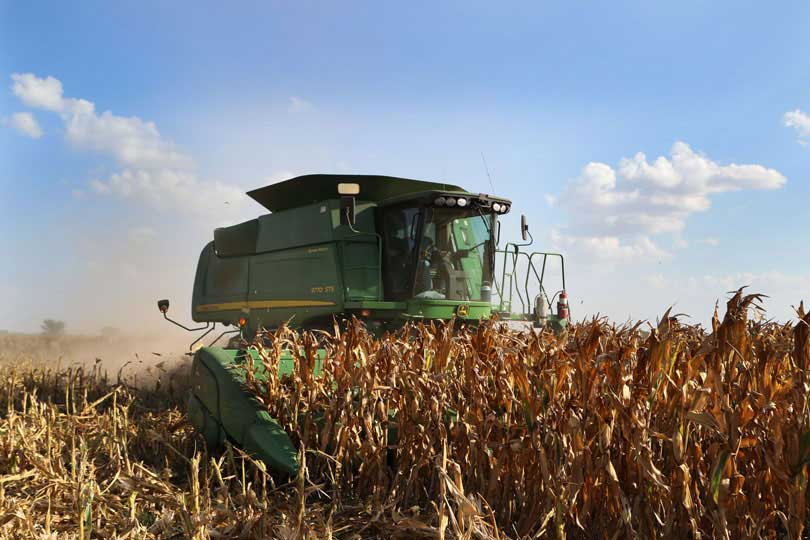By Jessica Domel
Multimedia Reporter
Like most years, there was good and bad news for U.S. farmers in 2018, but a few extenuating circumstances, like a trade war, took their toll.
From January through November, there was a two percent increase in agricultural exports, valued at $128.4 billion. But starting in March, as trade tensions rose, foreign purchases of U.S. commodities dropped.
That, combined with the government shutdown delaying trade numbers, means agriculture doesn’t have a clear picture of whether or not calendar year 2018 will top 2017 exports.
Looking at the first two months of fiscal year 2019, October and November of 2018, there has been a nine percent decrease in exports and a 10 percent increase in imports.
Just as the import/export situation remains uncertain, total plantings and prospective plantings remain up in the air until the U.S. Department of Agriculture (USDA) releases its next round of reports.
“We did see total plantings for the principle crops up a little bit to 319.6 million acres, and then harvested acres were down a little bit,” USDA Chief Economist Rob Johansson said.
Wheat
U.S. farmers planted the second-smallest winter wheat crop since records began.
“We do see winter wheat planted acres coming in at 31.3 million acres, down four percent year-over-year,” Johansson said.
Excessive precipitation and cool temperatures during the planting window contributed to lower than normal acreage.
“This will be the second lowest planted acres ever going back to 1909,” Johansson said.
Texas farmers planted the lowest winter wheat acres since 1972.
Nationally, hard red winter wheat acreage is down three percent. Soft red winter wheat acreage is down seven percent, while white winter wheat planting was down three percent.
USDA also reports there have been fewer exports of the crop.
“We saw a 14 percent decrease in exports from calendar year 2017 to calendar year 2018 from $5.6 billion to $4.8 billion and a decrease in quantity of exports of 21 percent,” Kamron Daugherty, USDA trade economist, said.
At the end of December, there were 104 million bushels of all-wheat in Texas. That’s down one percent from 2017.
Off-farm wheat stocks in Texas were two percent lower than 2017 at 101 million bushels.
Nationally, all-wheat stocks were about two billion bushels, up seven percent from last year, as the new year began.
All-farm wheat stocks were up 28 percent year-over-year.
Corn
On the heels of the second largest corn crop on record, state and national corn production is forecast down for the 2018/19 crop.
U.S. corn production for the 2018 crop year is estimated at 14.420 billion bushels.
That’s down 206 million bushels due to lower yields and a slightly smaller harvest area.
“We had the second-largest crop on record ever,” Johansson said. “Yield at 176.4 bushels per acre. That’s a little above trend yield. We did see more planted acres to soybeans relative to corn this year at 89.2 million acres. The yield we saw was the second highest ever. Production was a record up three percent at 4.54 billion bushels.”
In 2018, Texas farmers produced nearly 190 million bushels of corn. That’s down 40 percent from 2017.
Yields were down 32 bushels an acre at 108 bushels to the acre.
Total corn use is forecast down 165 million bushels to 14.865 billion bushels, but there has been a 37 percent increase in exports for the first 11 months of 2018.
Due to the government shutdown, numbers aren’t yet available for December.
Exports for January through November 2018 are valued at $11.7 billion. Shipments were up 33 percent from the same period in 2017.
“That was largely fueled by increased exports to countries like Japan, Korea, Taiwan and Vietnam,” Daugherty said.
The U.S. corn supply is falling faster than use, according to USDA. The latest estimates lower corn stocks 46 million bushels.
The season-average corn price received by farmers is $3.60 per bushel.
Grain sorghum
Nationwide, farmers are forecast to produce more grain sorghum than last year, thanks to slightly larger yields at 72.1 bushels per acre.
According to USDA, that will more than offset a decline in the harvested area for 2018/19.
Grain sorghum production in Texas was down 34 per

